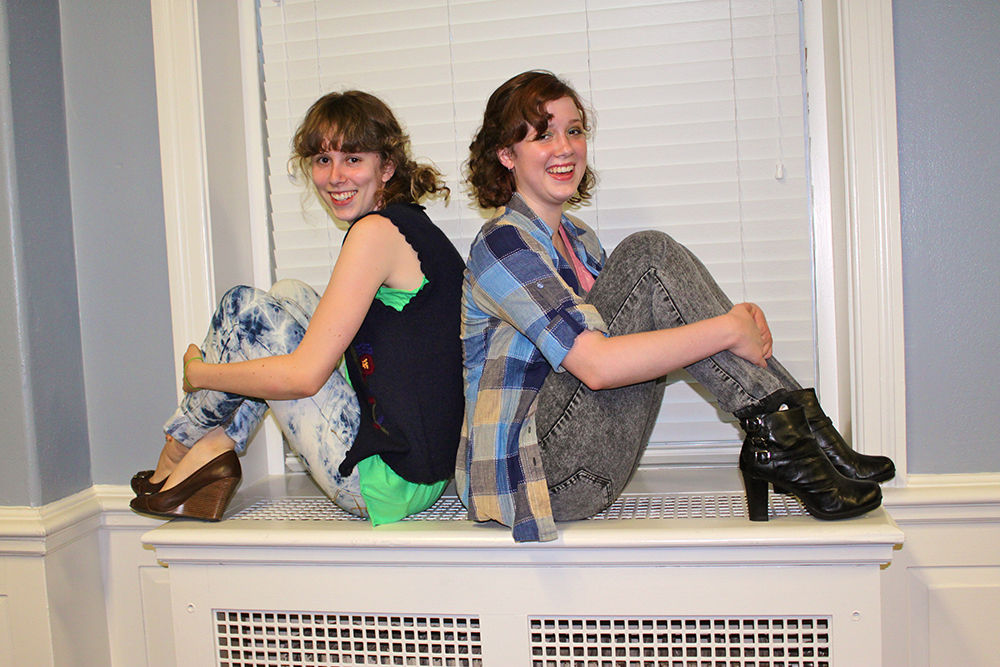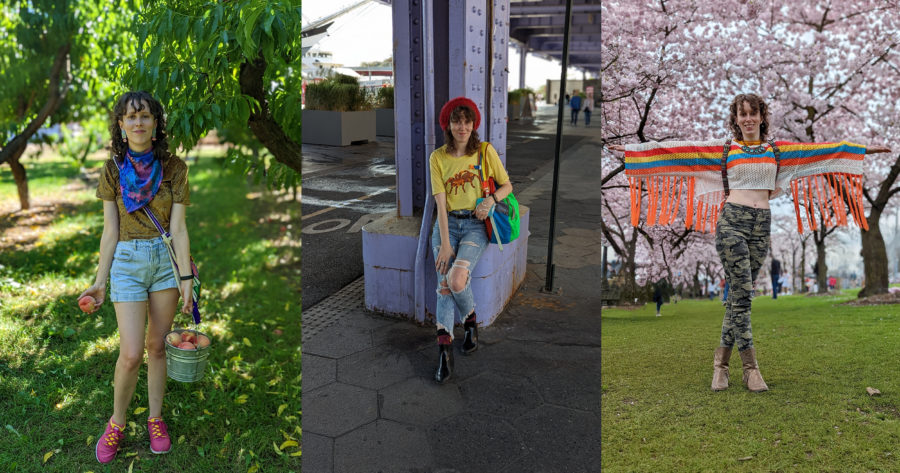Today’s post is a little different. The following is a much overdue love letter to my special interest fashion.
I once bonded with a complete stranger over the color pink.
Now, if you think I love the color pink, you would be mistaken. During childhood, pink was a color I vehemently avoided because it was so girly, so basic, so cliché. However, in adulthood I began using the color pink to challenge myself. It became a way to push the boundaries of my comfort level with fashion. I bought pink clothing, despite my dislike of the color, as a way to force myself to try something new, and somehow make it work.
With all of my shortcomings socially and in my career, I at least could conquer the color pink.

It became a tool to expand my fashion skills and build my confidence in a world that constantly overlooked me. Today, I not only buy pink clothing, I buy other things that are pink. For instance, I have a pink bike (her name is Princess Bubblegum). Pink has become a reminder that I have the power to learn and grow, while simultaneously connecting me with my inner-child who maybe wanted to like pink but didn’t know how to.
In this way, fashion has been a deep interest of mine since childhood, but it didn’t truly make itself known until my freshmen year of college.
In the beginning, fashion was about “fitting in”, as it is for most kids, neurodivergent or not. But for me, my inability to access the trendy clothes that my wealthy private school classmates wore made my neurodivergent traits feel more obvious and exposed.
I remember the day I got my first pair of jeans. I was about 10 and visiting an open air mall with my family in Corte Madera, CA (a suburb of San Francisco). The jeans were slightly flared and an unnatural shade of blue because of a shimmery thread woven into the denim fabric.
Wearing those jeans was the first time I had ever truly felt “cool”. And in feeling cool, I finally felt safe. Safe from the judgment of my peers.
Also around age 10, I had a brief but prolific period where I drew pages upon pages of dresses and shoes. Not people, just dresses, and just shoes. I then concluded I would be a fashion designer “when I grew up”.
But my mom reminded me that being an apparel designer would involve learning how to sew… and I quickly lost interest. Sewing then and now has never been able to hold my attention.
Middle school and highschool saw me continuing to be a “follower” of fashion. But I always had an inkling that fashion could be something more for me. Unfortunately, I was too afraid to engage with that thought.
Then I moved to the middle of nowhere Missouri (for college) and I suddenly wasn’t afraid anymore. Why? A perfect storm of circumstances:
- I was a “big city girl” in a town of just 8,000 residents and 500 students.
- I found myself at an ALL GIRLS school, or in other words, there were no more scary boys around.
- I almost instantly bonded with one of my roommates over fashion and we quickly became best friends.
- My new best friend and I discovered and located an infamous thrift store where clothes only cost 25 cents.

Honestly, I’m not sure if my deep interest in fashion would have survived and blossomed like it did without my best friend. So thank you, Anna Lee!
I still dream about that 25 cent thrift store! It was nothing glamorous. Just a small single-story building with dingy white walled rooms filled with piles and piles of clothes. And yes, the clothes were indeed only 25 cents. But you certainly had to do a lot of digging to find anything!
We enjoyed the treasure hunt. It was an experience I imagine is akin to digging through the Goodwill bins (something I still have never done).
With clothing costing only 25 cents, I was able to explore my interest in fashion with freedom I had never experienced before (or even imagined possible). I could try all sorts of different clothing and if it didn’t work out, it only cost me 25 cents to try.

Anna Lee and I soon became known as the fashionistas on our small college campus. We did fashion photoshoot after photoshoot to occupy our free time. I poured over fashion magazines looking for inspiration. I was even elected to lead and organize a huge campus wide clothing swap my sophomore year.
I found fashion finally giving me what I had hoped it would for so many years. It had given me confidence.
Fashion quickly became one of my most valuable and beloved tools for my AuDHD.
How did it become a tool for me? Fashion became part of my mask.
Though masking is largely a bad thing, fashion is a part of my mask that I actually…enjoy! It’s part of my mask that is somehow authentically me. But masking is by nature unauthentic, right? True. So in identifying fashion as a piece of my mask, I have simultaneously identified something new about masking that we don’t yet completely understand or have the terminology for.
How does my fashion mask work? I create outfits that convey how I feel on the inside. These outfits make the confidence, the personality, the strength that is often not immediately apparent to others, visible on the outside.
If RSD is the evil sidekick that obnoxiously tags along, fashion is the trusty companion that leads me fearlessly through my day and lovingly promises to keep me safe at all costs.
Here’s what my fashion mask does for me:
- It quietly and safely expresses (in a visual way) to others my true AuDHD self.
- It acts as my metaphorical armor: when I look good, I feel good. When I feel good I can more comfortably take on whatever comes my way. If I wake up in a bad mood one morning, I make an effort to put on a nice outfit to lift my spirit.
- It allows me to express my creativity with minimal effort and reminds me that I am indeed skilled, on those days when I feel like a useless blob that no one likes.
- It earns me compliments which help soothe my RSD.
- It gives me a default talking point. If anything I can compliment your outfit and connect with you through fashion. This is my go-to conversation opener with strangers (hence my conversation about the color pink).
After Missouri, I returned to Portland and fed my deep interest in fashion by taking fashion history classes at design school. I later became an assistant producer of a seasonal fashion show at the MAC which I helped produce for many years. I also trained and worked as a fashion stylist for a brief but memorable stint in 2017.
Today, I follow a lot of fashion influencers on Instagram, listen to podcasts about fashion history, check out fashion related museum exhibits, and curate a closet full of unique clothing.
Header photos + bike photo courtesy of Dre!

